
Week #20 Organized Home Challenge
How To Organize Files In Your Home
In this week's challenge we'll tackle how to organize files in your home so you can find the paper and documents you need, when you need them, without having to spend all your time filing.
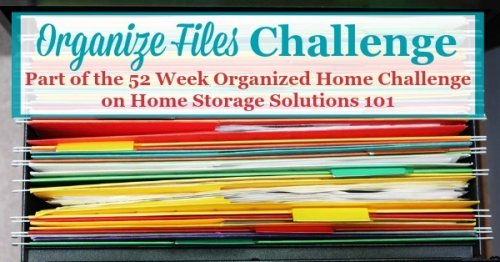
This challenge is really a culmination of several week's worth of work you've already done, if you've been following along with the past several challenges.
That is because creating a home filing system all at once can be a bit daunting, so I broke down the process over a couple of week period.
First, we organized how we dealt with and processed much of the incoming paper into our homes, with our home mail organizer center. Next, we dealt with organizing the paperwork that goes out most frequently in our homes, organizing and paying bills. Then, lastly, we worked on organizing one type of document that was needed each year, tax documents.
Are you new here? The Organize Files Challenge is part of the 52 Weeks To An Organized Home Challenge. (Click the link to learn how to join us for free for future and past challenges if you aren't already a regular reader).
Now, we'll put all those previous actions in their place, and finish off a large majority of the paper organization, by creating a home filing system that saves additional documents you may need to reference over the years for your home to function smoothly.
Here are the steps to take:
Step 1: Choose A Place And Storage Solution To Store Your Home's Files
The first step in the Organize Files Challenge may seem like an obvious one, but it is very important, since it is to choose a place and storage solution to store your home's files.
I made the mistake for several years of my adult life not really having a place to file and keep papers in my home. That resulted in lots of lost paperwork, and scrambles to find important documents when we needed them.
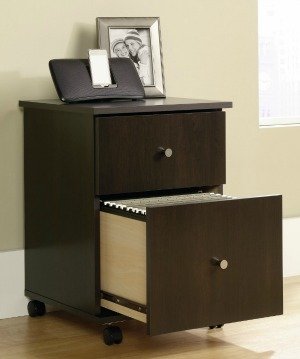 File cart [Click to see similar products on Amazon]
File cart [Click to see similar products on Amazon]Every home, no matter how small in size or number of family members needs a place to hold and file paperwork. This can be a file drawer or cabinet, a rolling filing basket, or a cardboard bankers box.
It should ideally be at least two file drawers in size, or an equivalent based on the storage solution you choose. That may seem large to you (or small, depending on how much paper you have), but giving your paper enough space is important. You can choose a file cabinet that looks like one you'd find in an office, or they have file cabinets for your home which look more like nice pieces of furniture.
Make room for as much filing space as you need, because if you don't have enough filing space you'll delay filing things, because shoving one more thing into the space just really isn't possible.
You can choose to have your files located wherever you want in your home, but ideally it will be close to your mail center, and to where you pay your bills and otherwise do your paperwork, such as in your home office or kitchen.
You don't have to get a fire resistant filing cabinet, but you may want to consider it if you've got paperwork that cannot easily be replaced. (Or, you could choose to store such documents in a safe deposit box.)
Here are some of these smaller boxes that are available:
Step 2: Get Rid Of Paper Clutter In Your Current Filing System If You Have One
If you've already got some type of filing system set up, even if it's not caught up and to your current liking, you will also need to deal with the contents of this current filing system during this challenge.
As always, before we begin to organize we get rid of excess clutter, so step 2 of the challenge is to declutter your current filing system, getting rid of any documents that are no longer worth saving, but instead are just paper clutter now.
You can read my article on how to get rid of file clutter here for more details.
Step 3: Create Your Home Filing System And Organize Files
The next step in this challenge is to create your home filing system and organize the files within it.
You should use a combination of hanging files and manila folders. I've provided more general filing tips, plus discuss the filing supplies you'll need in this article.
The files you choose for your filing system will be somewhat unique to your individual circumstances, but here is my article listing suggested file categories for your home filing system that can help you out.
One file everyone should have though is a vital records file, which contains some of the most important and hard to replace documents in it. The link provides more information to my article about how to create this file, and ways to safely store the documents contained within it, including some information about fire-resistant filing boxes and safe deposit boxes.
Once you've create all your file folders go ahead and create a file index. The article linked gives you more information, but basically this is a table of contents for your filing system, which will help you not accidentally later make duplicate files with a slightly different name, or scratch your head wondering what you named a file.
Next, go ahead and organize files for each of the categories, adding things as you go.
If you've been working on your filing system from the very beginning of keeping your home, what I've just told you to do doesn't sound too overwhelming. However, if you've got papers all over your home and never had a home filing system before, what I just said about how to organize files will seem like an almost impossible task.
Trust me, I've been there. The first thing to do is set up the system, and begin using it today. Over the next couple of weeks sit down with a shredder and go through your papers, putting them into the correct files or shredding them if you no longer need them.
It will take a while, but a little at a time while listening to the radio or watching a movie on your computer will get the job done and then you'll just have to deal with papers as they come in, not huge stacks ever again!
Step 4: Purge Some Of Your Files Annually To Keep Paper Clutter From Taking Over
The last step in the Organize File Challenge is to have a good look at your files annually, and decide what can get tossed, so you don't start getting too much paper accumulated over time.
Honestly, much of the paperwork that is unique to this challenge, like investment documents or medical records, and vital documents, all need to be kept long term so you won't actually be purging them often, if at all.
However, there are less of these documents typically than the kind you can throw away in reasonable intervals, like your utility bills and grocery receipts, for example. I've given instructions for a "retention schedule" for those types of documents, and when to trash them in this article here.
As long as you purge these types of documents regularly (and by that, I mean annually), you won't find yourself running out of filing space too quickly.
Here's my article with more information about this annual mission to declutter files from your filing system with more details.
Remember some of those documents that you purge should be shredded, not just tossed in the recycling bin or trash can. Here's my list of what documents need to be shredded so you don't accidentally disclose personal identifying information during this annual purge.
Listen To Taylor's Video Tips For This Week's Organized Home Challenge & Declutter 365 Missions
Do you want more in-depth tips and instructions for how to do this week's missions and challenge all about decluttering and organizing files? If so, I've got recorded video tips from me, Taylor, from the video archives in the Declutter 365 Premium group, all about this week's challenge and missions.
These video tips are available on demand in the archives, once you're a member of the group.
In Week #20's video I discussed the following topics, among others:
- Function and purpose of your filing system
- Simple ways to make filing easier
- What to put into your vital records file, and how to protect those documents
- Tips for organizing your home filing system
- Declutter 365 missions for week
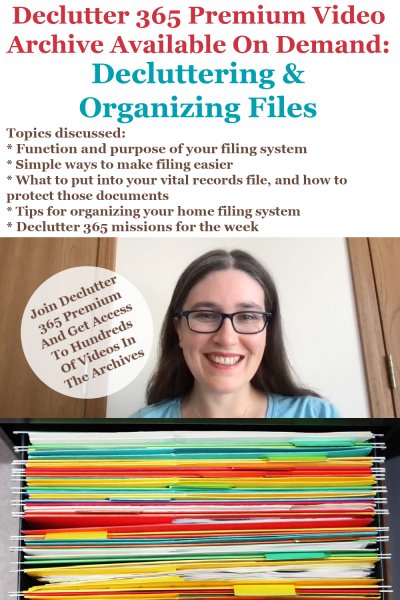
I suggest watching the video archive for the week, perhaps while you're doing some decluttering or cleaning around your home, before starting the week's missions and Challenge, and then you'll be able to breeze through this week's worth of decluttering missions, as well as organize what's necessary for the 52 Week Organized Home Challenge, based on the advice and instructions within those videos.
It really is like having me, Taylor, available, 24-7, as your decluttering and organizing coach, for every area of your home!
Plus, once you're a member of Declutter 365 Premium you get access to not only this video, but all the videos for the 52 weeks of the year, for 5 years (that's over 260 videos available in the archives!)

Get This Paper & Filing Decluttering Checklist + 32 Other Decluttering Checklists For Your Home
Right now you're decluttering your papers and files, and there's a lot of types and varieties of these around your home.
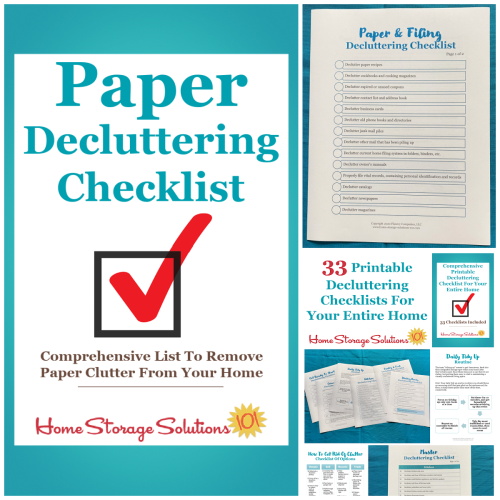
I've done the hard work of breaking down these tasks into smaller more manageable steps for you, so you don't get overwhelmed or worry you're forgetting a task, and you can go at the pace you want, whether that's fast or slow.
In addition, you can tackle these decluttering tasks in whatever order you want when you use these checklists!

Tell Me How The Organize Files Challenge Is Going For You
I would love to know how this week's Organize Files Challenge is going. You can tell me your progress or give me more ideas for how you've organized your home filing system in the comments.
I also love before and after pictures of your file drawers or boxes, and would love to see some of yours. Submit your pictures (up to four per submission) and get featured in the Creative Storage Solutions Hall of Fame. You've worked hard to get organized, so now here's your chance to show off!
Plus, if you've gotten rid of lots of papers over the course of the last few challenges, make sure you share your successes in the getting rid of paper clutter hall of fame.
For example, here's a testimonial from a Declutter 365 Premium member, Amanda, who said:
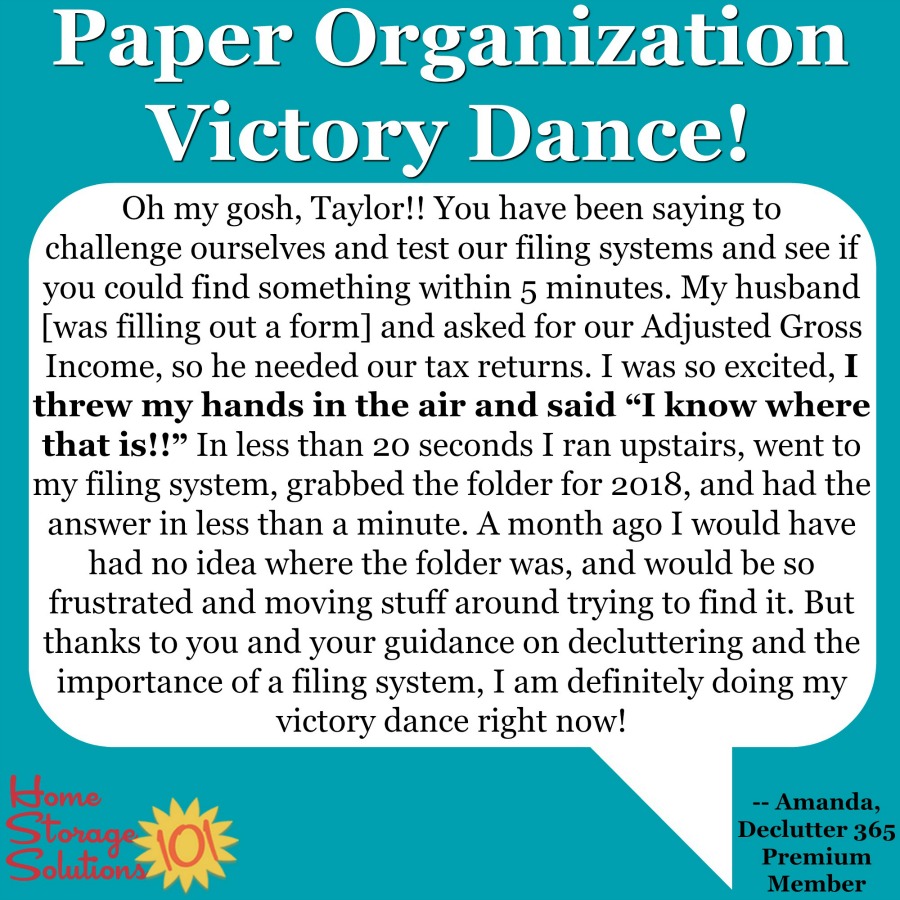
As you can see, Amanda did a victory dance now that her filing was organized, and she could easily find what she wanted without a sense of dread, or hours of searching! You can do it too!
Sneak Peek For Next Week's Challenge
We're working on our homes slowly, one area at a time, so don't get too distracted from the Organize Files Challenge this week. However, I want you to know that we're getting close to being done with most of our paper clutter and organization, with just a couple of areas to go.
Next week we're going to work on some areas that provide a large bulk of paper clutter in our homes, when we work on organizing magazines, newspapers and catalogs.
Make Sure You Make The Most Of These 52 Organizing Challenges
Get your copy of the printable one page 52 Week Organized Home Challenge schedule for the year here, so you can see all the challenges we're working on.

Further, if you'd like to join a community of others who are all commmitted to these organizing challenges and corresponding decluttering missions, and want more interaction with me, Taylor, video archives of Taylor providing more tips for each of these challenges and missions, as well as live monthly group coaching sessions focusing on the skills and habits necessary to maintain your home from now on, I'd urge you to join the private and exclusive Declutter 365 Premium Facebook group (you can learn more about it at the link).

In addition, have you gotten your Declutter 365 Products yet, to make sure you can get even more assistance with decluttering and organizing your home this year? There are both free products (like the Declutter 365 calendar, a $20 value), as well as add-ons, such as daily text messages, planner stickers, and a Premium Facebook group, as well as a pack of printabe decluttering checklists.
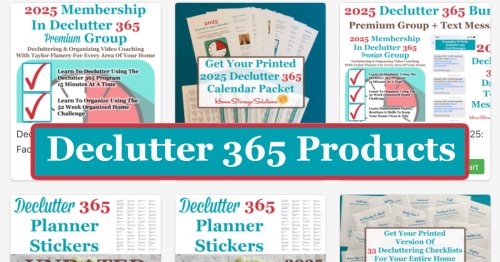
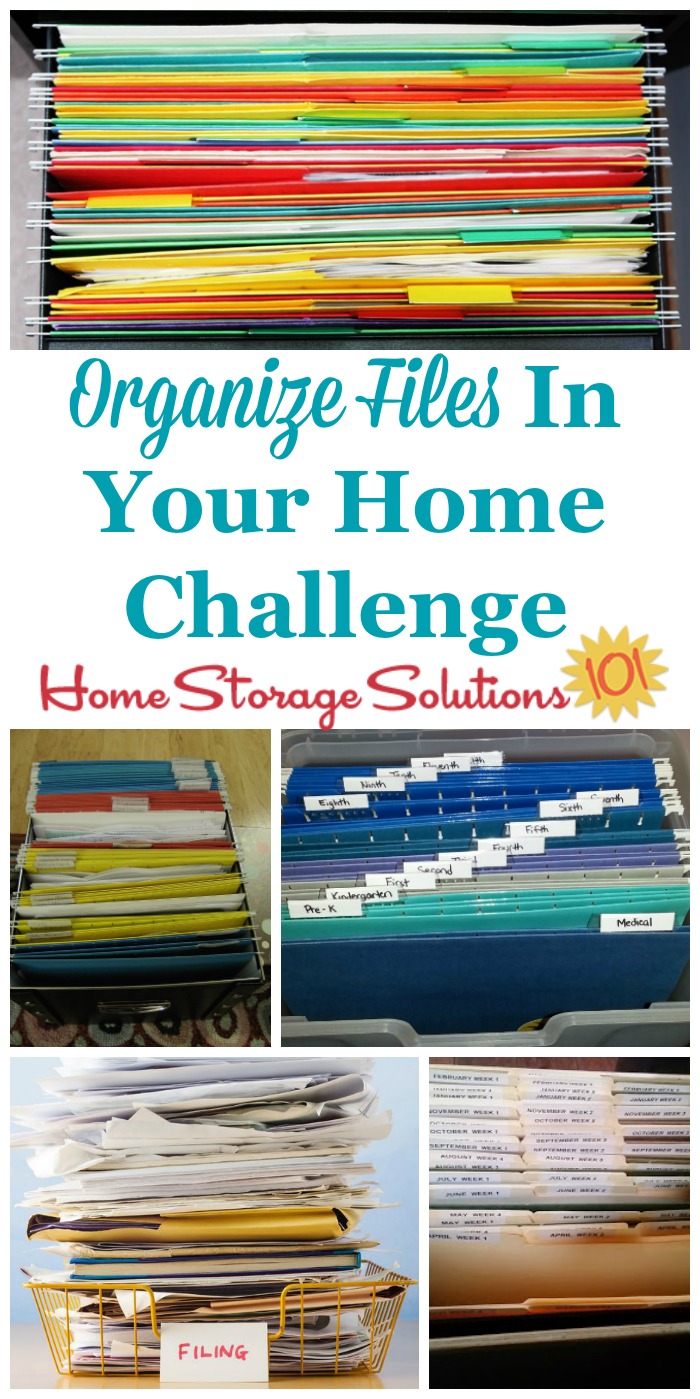
Some links on this page are affiliate links, meaning that if you purchase a product through them I receive a small commission which helps me provide this information to you for free, plus support my family. My integrity and your satisfaction are very important to me so I only recommend products I would purchase myself, and that I believe would benefit you. To learn more please see my disclosure statement.
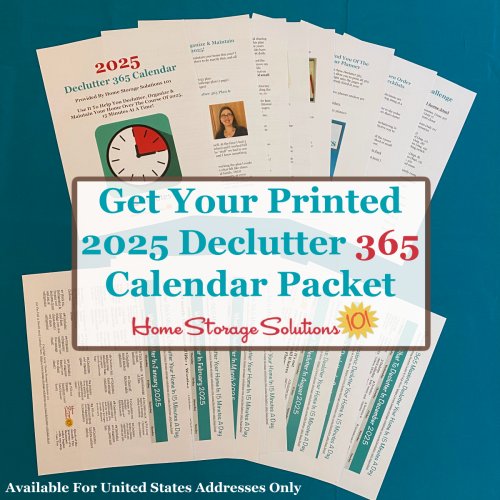


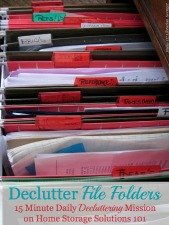

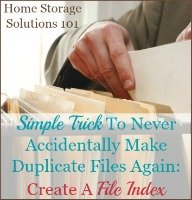

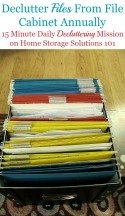
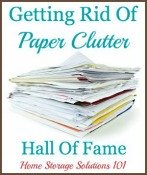

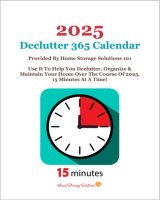

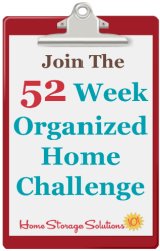



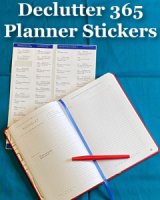





Share Your Comments, Tips & Ideas
I would love to hear from you, sharing your thoughts, questions, or ideas about this topic, so leave me a comment below. I try to always respond back!